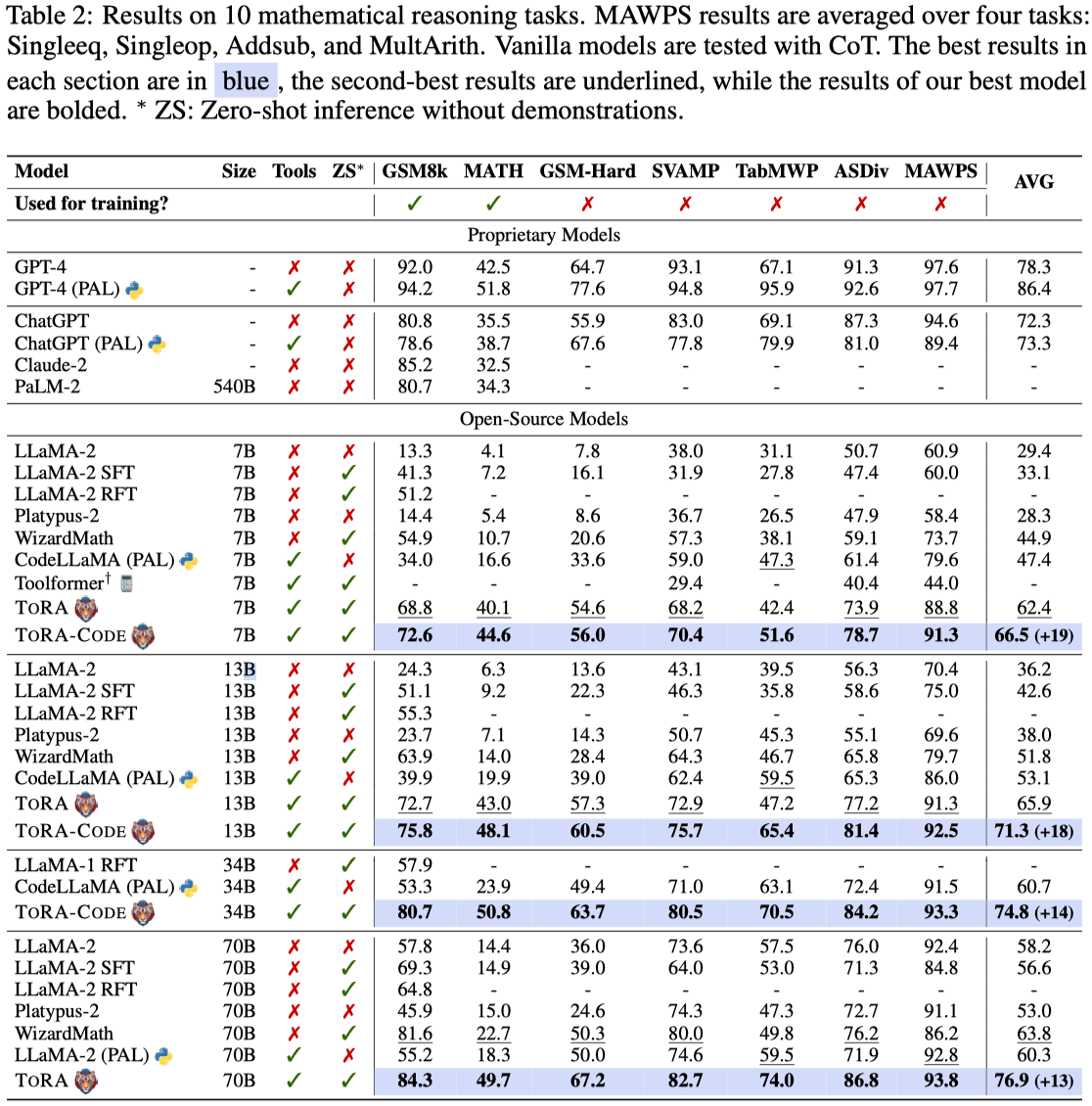ToRA is a series of Tool-integrated Reasoning Agents
designed to solve challenging mathematical reasoning problems by interacting with tools,
e.g., computation libraries and symbolic solvers. ToRA series seamlessly integrate
natural
language reasoning with the utilization of external tools, thereby amalgamating
the
analytical prowess of language and the computational efficiency of external tools.
ToRA models significantly outperform open-source models on 10 mathematical reasoning
datasets across all scales with 13%-19% absolute improvements on average. Notably,
ToRA-7B
reaches 44.6% on the competition-level dataset MATH, surpassing the best open-source
model
WizardMath-70B by 22% absolute. ToRA-Code-34B is also the first open-source model
that achieves an accuracy exceeding 50% on MATH, which significantly outperforms
GPT-4’s
CoT result, and is competitive with GPT-4 solving problems with programs.
 ToRA:
ToRA: 





